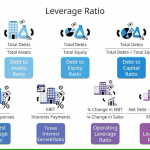Are you considering investing in Special Purpose Acquisition Companies (SPACs) or Initial Public Offerings (IPOs)? If so, understanding the risks involved and implementing effective risk management strategies is vital.
In this article, we will explore the key risk management strategies that can help you navigate the world of SPAC and IPO investments successfully.
Understanding the Risks Involved in SPAC and IPO Investments
SPACs and IPOs offer exciting opportunities for investors to get involved in promising companies at an early stage. However, they also come with inherent risks, such as market volatility and limited information about the company’s financials and operations. As an investor, it is crucial to have a clear understanding of these risks before committing your capital.
One of the primary risks associated with SPAC and IPO investments is market volatility. The stock prices of newly listed companies tend to be more volatile compared to established companies. This volatility can lead to significant fluctuations in the value of your investment, making it important to be prepared for potential losses.
Another risk factor is the limited information available about the company’s financials and operations. Unlike established companies, SPACs and IPOs often have limited historical data and track record. It becomes challenging to assess the long-term potential and stability of these companies, making it crucial to conduct thorough due diligence before investing.
Risk Management Strategies for SPAC and IPO Investments
Developing a risk management plan is essential to safeguarding your investments and optimizing your returns. By leveraging a robust risk management strategy, you can identify and mitigate potential risks, establish proper due diligence processes, and make informed investment decisions.
Conducting Thorough Due Diligence Before Investing
Before investing in a SPAC or IPO, it is essential to conduct thorough due diligence. This involves researching the company’s financials, management team, business model, and competitive landscape. Reviewing the company’s prospectus, financial statements, and any available analyst reports can provide valuable insights into its potential.

Additionally, consider analyzing the market conditions and industry trends to understand the broader context in which the company operates. By conducting comprehensive due diligence, you can assess the company’s growth prospects, competitive advantage, and potential risks more accurately.
Diversifying Your Investment Portfolio
Diversification is a key risk management strategy that applies to all types of investments, including SPACs and IPOs. By spreading your investments across different sectors, industries, and asset classes, you can mitigate the impact of any single investment’s poor performance. Diversification can help reduce the risk of loss and balance out potential gains.
When diversifying your portfolio, consider investing in companies from different sectors and industries. This approach can provide a level of protection against industry-specific risks and economic downturns. Furthermore, consider allocating a portion of your investment capital to more stable and established companies alongside your SPAC and IPO investments.
Setting Realistic Expectations and Managing Risk Tolerance
Setting realistic expectations and managing your risk tolerance is crucial when investing in SPACs and IPOs. While these investments can offer significant returns, they also come with higher levels of risk. It is important to assess your risk tolerance and invest accordingly.
Understand that investing in SPACs and IPOs can be more volatile compared to traditional investments. Setting realistic expectations regarding the potential returns and being mentally prepared for potential losses can help you make more informed and rational decisions.
Monitoring Market Trends and Staying Informed
To effectively manage risks in SPAC and IPO investments, it is essential to stay updated on market trends and industry news. Monitor the performance of the companies you have invested in, as well as any changes in the broader market conditions. Regularly reviewing financial reports, news articles, and analyst opinions can provide valuable insights into the risks and opportunities associated with your investments.
Utilizing Stop-Loss Orders and Other Risk Mitigation Tools
Stop-loss orders are an important risk mitigation tool that can help you limit your losses in case the market turns against your investment. By setting a predetermined price at which you are willing to sell your shares, you can protect yourself from significant declines in the stock price. This tool can help you implement an effective risk management strategy and avoid potential large losses.
In addition to stop-loss orders, consider utilizing other risk mitigation tools such as trailing stops, options, and hedging strategies. These tools can provide additional layers of protection and help you manage your risk exposure effectively.
Consulting with Financial Advisors and Experts
Seeking guidance from financial advisors and experts can significantly enhance your risk management efforts when investing in SPACs and IPOs. Experienced professionals can provide you with valuable insights, help you assess the risks and potential rewards of specific investments, and offer personalized advice based on your financial goals and risk tolerance.
Consulting with experts can give you access to their expertise and knowledge, allowing you to make more informed investment decisions. However, it is important to choose advisors who have a deep understanding of the SPAC and IPO markets and have a track record of successful investments in these areas.
How a wealth manager can help with risk management
A skilled wealth manager plays a vital role in this pursuit, offering expert guidance and tailored solutions to protect and grow your assets. By conducting a comprehensive assessment of your financial goals, risk tolerance, and investment portfolio, a wealth manager can develop a customized risk management strategy that aligns with your unique needs.
The importance of risk management in wealth management
Effective risk management is a cornerstone of successful wealth management. It involves the identification and assessment of potential risks and the implementation of strategies to mitigate those risks. Without proper risk management, individuals and businesses expose themselves to unnecessary financial vulnerabilities. A wealth manager can help navigate these risks, ensuring the preservation and growth of your wealth.
What is a wealth manager?
Before delving into the role of a wealth manager in risk management, it’s important to understand what a wealth manager is. A wealth manager is a financial professional who provides comprehensive advice and services to high-net-worth individuals and businesses. Unlike traditional financial advisors, wealth managers take a holistic approach, considering various aspects of their clients’ financial lives, including investment management, retirement planning, tax strategies, estate planning, and, of course, risk management.
The role of a wealth manager in risk management
A wealth manager is responsible for assessing and managing risks associated with their clients’ investment portfolios. They help their clients understand their risk tolerance and develop a risk management strategy that aligns with their financial goals. By leveraging their expertise in the financial markets and their understanding of their clients’ needs, wealth managers can identify potential risks and implement suitable risk mitigation strategies.
Assessing and identifying risks in investment portfolios
One of the primary tasks of a wealth manager is to assess and identify risks within their clients’ investment portfolios. They analyze various factors, including market conditions, economic trends, and individual investment holdings, to determine the potential risks that could impact their clients’ wealth. This thorough assessment allows wealth managers to tailor their risk management strategies to specific client needs.
Developing a risk management strategy
Based on the assessment of risks, a wealth manager develops a customized risk management strategy for their clients. This strategy takes into account the clients’ risk tolerance, financial goals, and time horizon. It may involve diversification, asset allocation, hedging strategies, and other risk mitigation techniques. The goal is to strike a balance between risk and reward, ensuring that the clients’ investments are adequately protected while still offering potential for growth.
Diversification and asset allocation as risk management techniques
Diversification and asset allocation are two essential risk management techniques employed by wealth managers. Diversification involves spreading investments across different asset classes, sectors, and geographical regions. By doing so, wealth managers aim to reduce the impact of any single investment’s poor performance on the overall portfolio.
Asset allocation, on the other hand, involves dividing investments among different asset classes, such as stocks, bonds, and real estate, based on the client’s risk tolerance and investment goals. This approach helps balance risk and reward, potentially increasing the chances of achieving long-term financial objectives.
Monitoring and adjusting risk management strategies
Risk management is an ongoing process. A wealth manager continuously monitors the performance of their clients’ investment portfolios and adjusts risk management strategies as needed.
They stay abreast of market trends, economic conditions, and changes in their clients’ financial circumstances to ensure that the risk management strategy remains effective. By regularly reviewing and adjusting the strategy, wealth managers can proactively address potential risks and seize opportunities that arise.
The benefits of working with a wealth manager for risk management
Working with a wealth manager for risk management offers several benefits. Firstly, wealth managers bring a wealth of knowledge and experience to the table. They have a deep understanding of financial markets, risk management techniques, and investment strategies. This expertise allows them to provide valuable insights and guidance tailored to their clients’ unique situations.
Secondly, wealth managers offer personalized attention and customized solutions. They take the time to understand their clients’ financial goals, risk appetite, and constraints, and develop strategies that align with those parameters.
Lastly, wealth managers provide ongoing support and guidance, particularly during times of market volatility and economic uncertainty. They can help clients navigate challenging financial situations and make informed decisions to protect and grow their wealth.
Questions to ask when choosing a wealth manager for risk management
Choosing the right wealth manager for risk management is crucial. To ensure you find a suitable professional, consider asking the following questions:
- What is your experience in risk management?
- How do you assess risk tolerance and develop a risk management strategy?
- Can you provide examples of successful risk management strategies you have implemented in the past?
- How often do you review and adjust risk management strategies?
- How do you stay informed about market trends and economic conditions?
- What is your approach to diversification and asset allocation?
- How do you communicate with clients during times of market volatility?
- What fees and charges should I expect for risk management services?
In conclusion, a skilled wealth manager plays a crucial role in risk management. By conducting a comprehensive assessment of their clients’ financial goals and risk tolerance, they develop tailored risk management strategies that align with individual needs.
From diversifying investment portfolios to monitoring market trends and adjusting strategies, wealth managers provide ongoing support and guidance. By working with a wealth manager, individuals and businesses can effectively protect and grow their wealth, even in the face of financial uncertainties.
Harnessing the Expertise of Wealth Managers for IPO and SPAC Investments
Investing in Initial Public Offerings (IPOs) and Special Purpose Acquisition Companies (SPACs) can be lucrative opportunities for investors seeking high-growth potential. However, navigating the complexities of these investment vehicles requires expertise, due diligence, and a deep understanding of the market dynamics. This is where the role of a wealth manager becomes invaluable. In this section, we’ll explore how wealth managers can provide guidance and assistance to investors looking to capitalize on IPOs and SPACs.
Comprehensive Due Diligence:
One of the primary roles of a wealth manager in the context of IPO and SPAC investments is to conduct thorough due diligence on behalf of their clients. This involves scrutinizing the financials, business models, management teams, and growth prospects of companies going public or merging with SPACs.
Wealth managers leverage their analytical skills and industry expertise to assess the viability and potential risks associated with these investments, helping clients make informed decisions.
Access to Exclusive Opportunities:
Wealth managers often have access to exclusive investment opportunities, including pre-IPO placements and private investment in public equity (PIPE) deals. By leveraging their networks and relationships with investment banks, venture capital firms, and private equity funds, wealth managers can provide clients with access to high-quality IPO and SPAC investment opportunities that may not be available to the general public. This access to exclusive deals can give clients a competitive edge and enhance their investment portfolios.

Risk Management and Portfolio Diversification:
IPOs and SPAC investments carry inherent risks, including volatility, liquidity concerns, and regulatory uncertainties. Wealth managers play a crucial role in helping clients manage these risks and diversify their investment portfolios accordingly.
By incorporating IPOs and SPACs into a well-diversified portfolio that includes a mix of asset classes and investment strategies, wealth managers can help mitigate downside risk and enhance long-term returns for their clients.
Strategic Allocation and Timing:
Timing is crucial when it comes to investing in IPOs and SPACs. Wealth managers leverage their market insights and macroeconomic analysis to identify optimal entry and exit points for these investments. They help clients develop strategic allocation strategies that align with their investment objectives, risk tolerance, and time horizon.
Whether it’s participating in the IPOs of high-growth technology companies or capitalizing on SPAC mergers in emerging industries, wealth managers provide clients with tailored investment solutions designed to maximize returns while minimizing risks.
Ongoing Monitoring and Adjustments:
The investment landscape is constantly evolving, and IPO and SPAC investments require ongoing monitoring and adjustments to ensure optimal performance.
Wealth managers provide clients with regular updates and insights on their investment portfolios, including performance reviews, market trends, and emerging opportunities. They proactively identify potential risks and opportunities, making necessary adjustments to clients’ portfolios to optimize returns and adapt to changing market conditions.
Educational Guidance and Client Empowerment:
Whether it’s explaining the intricacies of SPAC structures, demystifying the IPO process, or discussing the potential risks and rewards of these investments, wealth managers help clients navigate the complexities of the market with confidence and clarity.
In addition to providing investment advice and portfolio management services, wealth managers also serve as trusted advisors and educators for their clients. They empower clients with the knowledge and insights they need to make informed decisions about IPO and SPAC investments.
Conclusion: Importance of Implementing Risk Management Strategies in SPAC and IPO Investments
In conclusion, wealth managers play a crucial role in helping investors capitalize on IPO and SPAC investments. From conducting comprehensive due diligence and providing access to exclusive opportunities to managing risks, timing allocations, and empowering clients with educational guidance, wealth managers offer a range of services designed to maximize returns and achieve long-term financial success in the dynamic world of IPOs and SPACs.
By leveraging the expertise and resources of wealth managers, investors can navigate the complexities of these investment vehicles with confidence and achieve their financial goals.
Whether you are a seasoned investor or new to the world of SPACs and IPOs, understanding risk management strategies is crucial for protecting your investment capital and achieving your financial goals. By implementing effective risk management strategies, such as conducting thorough due diligence, diversifying your portfolio, setting realistic expectations, monitoring market trends, utilizing risk mitigation tools, and consulting with experts, you can navigate the exciting but risky world of SPAC and IPO investments with confidence.
Remember, investing in SPACs and IPOs carries inherent risks, but with proper risk management, you can maximize your chances of success and optimize your returns. Stay informed, make well-informed decisions, and continuously evaluate and adjust your risk management strategies as needed. By doing so, you can position yourself for long-term investment success in the dynamic world of SPAC and IPO investments.






